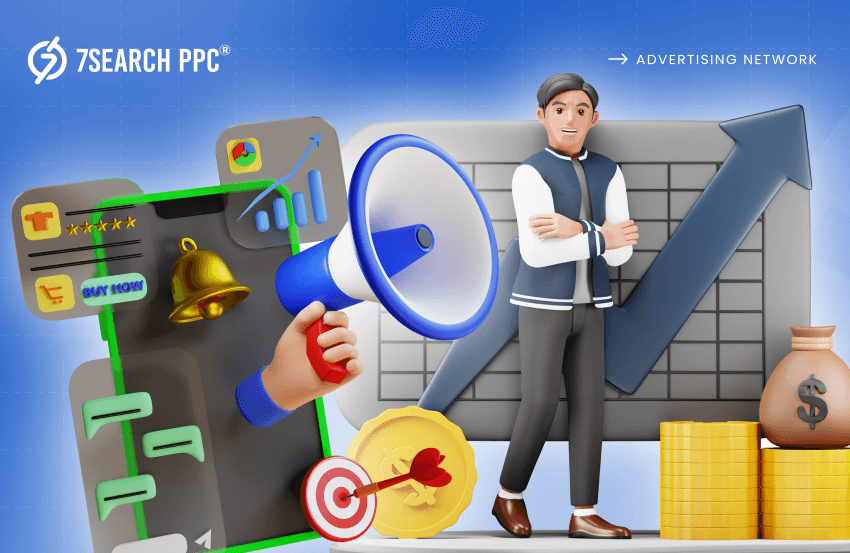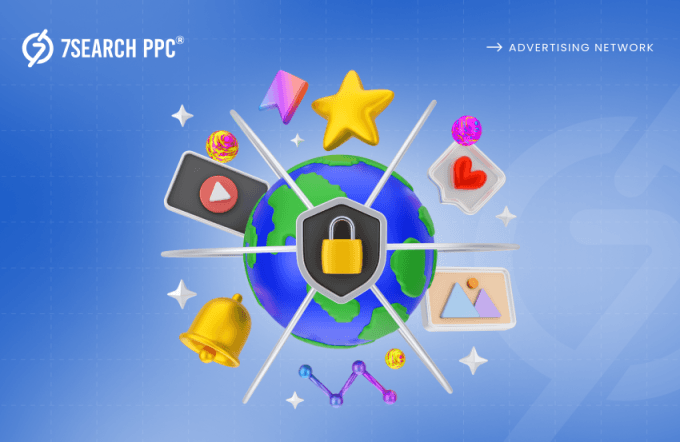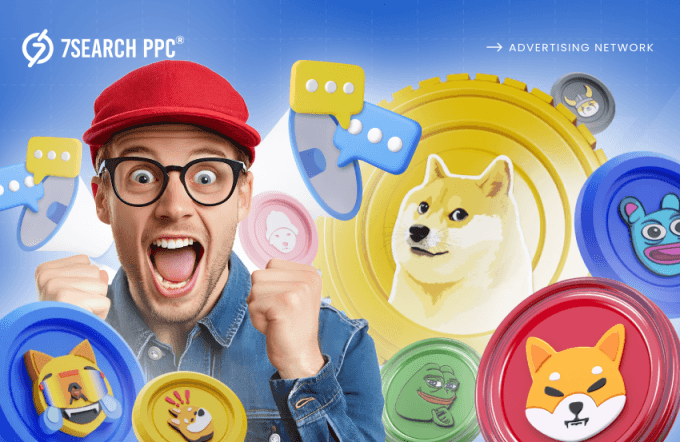Ad blockers are a common weapon for blocking ads. They are a blessing for those who want to avoid online ads, but for businesses like eCommerce, they are a bane. We are all witnessing the use of digital advertising on a large scale as traditional advertising becomes obsolete.
Giant e-commerce players like “Amazon” or ” Walmart” also use digital advertising to show their offerings through eCommerce ads. With so many digital ads around there, it makes customers annoyed and more inclined to use ad blockers.
So, how can you make sure your ads get noticed and connect with people effectively? Try native advertising!
Suppose you’re reading a blog about summer style trends. You see a pair of sunglasses that go perfectly with the outfit in the picture.
It’s not just a random product placement; it’s an ad that fits right in with the content, giving tips on choosing the right sunglasses for your face shape. It makes you curious, so you can click on it and find yourself exploring an eCommerce store.
In a world where people prefer authentic interactions over complex sales, native advertising can attract new loyal customers to your eCommerce business. Let’s explore how to use it effectively!
Native Advertising: A Seamless Approach To Online Advertising
The efforts of an advertiser will be marked as successful only when their ads catch the attention of the users. If the audience ignores the ads, then it means the online ads are not effective enough in grabbing attention. Audiences ignore online ads for two reasons: they are either not useful, or they’re disruptive.
Native advertising covers these two points and sets a stage for advertisers where they can seamlessly integrate their message into the user experience.
Let’s examine the definition more closely
Native advertising is a type of online advertising that seamlessly integrates with the content of the website or app you’re using. Unlike display ads, which usually appear in banners or pop-ups, native ads are created to match the look and feel of the surrounding content. This makes them more engaging and less disruptive for users.
For example- A native ad on a news website may resemble a regular article, but it will be clearly marked as “sponsored content” or ” promoted post.”Similarly, a native ad on social media may show up in your feed like a regular post of your friend, but it will actually be from a brand you follow.
Since native ads are less intrusive, users are more likely to notice and click on them. This makes them a smart advertising approach for advertisers.
The Role of Native Advertising in the E-commerce
In the crowded world of digital advertising, native advertising stands out for its ability to break through the noise and connect with consumers. While traditional social and search ads consume marketing budgets, native ads provide a more effective path for eCommerce advertisers to increase their return on investment (ROI).
Native ads work well because they focus on what users want. Instead of standing out like flashy banners, they fit in with the content around them. Research proves that people are 18% more interested in buying something after seeing a native ad compared to a banner.
This preference for valuable content over disruptive ads is a clear sign that native advertising is the future of ecommerce marketing.
How Can Native Advertising Transform Your E-commerce Brand?
Native ads have the potential to significantly impact eCommerce brands in a positive way. Here’s how:
Enhanced Credibility and Trust
No matter how good your offerings are and how well you are capable of providing after-sale services, if your online ads disturb the experience of your audience, then all your efforts get dumped as you lose trust and credibility. Native ads don’t shout “ADVERTISEMENT” like banners do.
Instead, they fit right in with the content around them. This makes them less annoying and helps people trust them more. Research says that because of this trust, people are more likely to pay attention to an eCommerce brand’s message when it’s presented as a native ad.
Higher Engagement
The more engagement you get on your online ads, the more leads you earn for your e-commerce business. Some native ad platforms permit their advertisers to target their native ads based on demographics and interests. This ensures your message reaches the most relevant potential customers.
Since native ads blend in with the content, they grab attention better than traditional or display ads. This leads to higher engagement, as users are more likely to click through, read, or watch your native ad.
Educates and Informs Target Audience
Native advertising enables you to highlight your brand’s expertise or the benefits of your products in a non-promotional manner. For example, an eCommerce brand that sells formal clothes could collaborate with an apparel website to produce sponsored content highlighting the brand’s expertise or the advantages of its products in a non-promotional way.
This educational approach informs the target audience and presents your eCommerce brand as a valuable resource.
Improved Conversion Rates
The primary goal of native advertising for eCommerce brands is to increase sales. It works by showing ads that fit naturally into the content people are already looking at, so they are more likely to click on them.
This can bring more people to your website, and because they’re already interested in your offerings, they are more likely to buy something. So, native advertising helps boost conversions by reaching the right people in a non-intrusive way.
Quicker Buying Process
Native advertising, when done effectively, can streamline the customer journey. By providing valuable content and information directly related to their needs, you can shorten the decision-making process.
For example, a native ad offers a solution to a common pain point and includes a clear call to action for your product. This targeted approach allows users to discover your offering and take the next step toward a purchase more quickly.
Native Ad Targeting For Ecommerce Success
Targeting options are crucial for reaching the right audience when you choose native ads to promote e-commerce offerings. Here are several effective targeting options to consider for your e-commerce ad campaign.

Demographic Targeting
This allows you to target users based on basic attributes such as age, gender, income, and education, providing a solid foundation for identifying your customer base.
For example,
- Scenario: Online Clothing Store
- Objective: Boost sales of women’s summer dresses
Demographic Targeting Strategy
- Age: 25-45
- Gender: Female
- Income Level: Middle to high-income
Geographic Targeting
You can control the placement of your native ads by specifying locations such as countries or regions. This is useful for promoting location-specific eCommerce products or services.
For example,
- Scenario: An eCommerce company specializing in outdoor sports gear wants to promote its new collection of winter jackets.
- Objective: They decide to use geographic targeting to maximize the effectiveness of their native ad campaign.
Geographic Targeting Strategy
- Location: Target customers in regions renowned for winter sports activities, such as the Rocky Mountains in the USA, the Alps in Europe, and Hokkaido in Japan.
- Climate: Pay attention to regions with winter weather or significant snowfall.
Behavioral Targeting
Some advertisers target their users based on their online activities. This includes purchase history, browsing behavior, and past interactions with your eCommerce brand.
For example,
- Scenario: Online Electronic Store
- Objective: Increase sales of high-end gaming laptops.
Behavioral Targeting Strategy
- Recent Searches and Browsing History: Target people who have recently looked up gaming laptops, accessories, or related gaming topics.
- Purchase Behavior: Focus on users who have previously purchased gaming equipment or often buy high-end electronics.
- Engagement with Content: Target users who have engaged with gaming content on a particular platform.
Prominent E-commerce Brands Utilizing Native Advertising Strategies
Several prominent eCommerce brands are effectively using native ad strategies to enhance their visibility and engagement in the market. Here are some notable examples:
Amazon
Amazon is an eCommerce company that uses the power of native advertising strategically. They use native ads to smoothly add product suggestions while you are browsing. These ads appear in search results and pages for related products, blending in as they belong there.
They use your info to show you native ads that fit what you’re looking for, making your shopping experience better instead of bothering you with annoying ads.
eBay
Just like Amazon, eBay also uses native ads to target certain groups of people. They show sponsored listings and promoted items that match what you’re searching for or looking at. This strategy helps eBay connect with potential customers who are actively interested in particular categories or brands.
Walmart
Walmart uses native in-feed ads on its website. These ads look like they belong there and the best thing is that these ads don’t interrupt your shopping experience. The in-feed ads promote relevant products to users as they browse through different categories or product listings.
This eCommerce company earned a total of $642.6 billion in global sales (In the fiscal year ended on January 31, 2024). A large part of this earnings came through native ads.
Zara
Zara’s native ad recommendations are a proven strategy that enhances your online shopping experience. As you explore a shirt, you’ll also find suggestions for shoes, accessories, and other items that perfectly match your original choice.
This effective approach not only makes your shopping experience more engaging but also encourages you to discover more items that suit your style. By doing so, they boost their sales each year and enhance their customer base.
Nike
Nike, a top sportswear company, uses native ads to blend their brand with content that athletes and fitness fans already trust. Nike uses native advertising to seamlessly integrate their brand message into their customer base without annoying them.
They form partnerships with:
- Fitness websites
- Apps
- Social media influencers
These native ads, often in the form of articles, videos, or social media posts, showcase the latest Nike athletic gear and footwear with engaging content. This subtle product placement seamlessly blends with informative or inspirational content, ultimately driving viewers to Nike’s online store or partnered retailers to explore the featured products.
Master Native Advertising For Your E-Commerce Business
Using native ads for e-commerce can be a powerful strategy to promote your products or services in a non-disruptive way that integrates seamlessly with the content your target audience is already consuming. Here is the best way to do it:
Clarify Your Goals and Identify Your Target Audience
Before you start, it’s important to clearly identify what you want to achieve. Do you want to increase your brand popularity, drive more website traffic, or boost conversions? Knowing your goals will help you tailor your native ad content and choose the ideal native ad platform.
Additionally, it is crucial to understand your ideal customer. Consider their demographics, interests, and online behavior to create native ads that will resonate with them.
Select The Reliable Native Advertising Platform
Selecting the perfect advertising platform for your native ad campaign might take some time. But don’t make a decision in a hurry because one wrong decision can derail your entire advertising efforts.
While choosing the native ad network or platform, you can look at the following things.
- Audience Targeting
- Ad Format
- Quality Of Publishers
- Budget and Pricing Models
- Support and Customer Service
- Customer Reviews
Develop Content That Inspires Action and Connection
Native ad campaigns are successful when they involve valuable content that seamlessly integrates with the platform’s existing content. Instead of simply promoting e-commerce products, you must focus on:
- Attractive headlines
- Concise copy
- Eye-catching infographics
- Engaging visuals showcasing your products or services.
Remember to highlight the benefits your eCommerce company offers and include a clear call to action to direct users to your e-commerce websites.
Employ Data-Driven Tactics For Maximum Impact
Why do many eCommerce companies focus on data-driven strategies? Data is essential because it helps companies create their blueprint plan for the future.
Using data helps you excel in native advertising for e-commerce. You can create personalized content and ad placements that appeal to specific audiences by looking at:
- Customer demographics
- Purchase history
- Browsing behavior
This data-driven approach ensures your native ads feel organic, reaching the right people with the right products at the right time. As a result, you will notice higher engagement, more conversions, and a better return on investment as your marketing becomes more accurate and effective.
Analyze Your Competitors’ Marketing Strategies
Analyzing your competitors’ marketing strategies can be incredibly valuable for mastering native advertising for your e-commerce business. By looking at the content that works well for them, you can learn what types of native ads might be successful for you.
You should pay attention to the platforms they use, their tone, visuals, and messages to see what attracts their audience. You can use this information to create native ads that blend naturally into the user experience on your chosen native advertising platform.
Monitor, Refine, and Improve
The “Monitor, Refine, and Improve” approach is the last and essential step for mastering native advertising in your e-commerce business. By regularly checking your campaigns, you get valuable insights into what works for your audience. This helps you adjust your ad creatives, targeting, and messages to fit better with the user experience.
By continually improving your native ad campaigns based on data, you can boost engagement and click-through rates and ultimately increase sales.
Conclusion
Native advertising is an effective ad strategy for e-commerce businesses looking to connect with customers in a seamless and engaging way. By blending ads with content that users are already interested in, you can build trust, increase engagement, and boost sales without disrupting the user experience.
By understanding your audience, using data-driven tactics, and continuously refining your strategies, you can make the most of a native ad campaign. Start integrating native ads into your marketing efforts today to see how they can transform your e-commerce brand.
Frequently Asked Questions (FAQs)
Why should I use native ads for my e-commerce business?
Ans. Native ads can help you reach new customers, build trust with your audience, and increase sales. It’s a more effective way to advertise than traditional or display ads because people are likelier to pay attention to it.
Can native ads help me sell more products?
Ans. Yes, native ads can help you increase sales by driving more traffic to your e-commerce website and converting more website visitors into customers.
How do I start using native ads for my e-commerce business?
Ans. The first move is to identify your goals and target audience. Then, you need to choose a native advertising platform that reaches your target audience. Once you have done that, you can create informative and engaging native ad content.
What should I include in my native ads?
Ans. Your native ads should include attractive headlines, concise copy, eye-catching visuals, and a clear call to action.
How can I track the results of my native ad campaigns?
Ans. You can track the results of your native ad campaigns using analytics tools provided by the native ad platform you’re using. These tools will show you how many people saw your native ads, clicked on them, and converted into customers.



















